Baby Milestones (1 - 12 months)
Witnessing your baby’s development is an amazing and unique experience. However, anxiety and even apprehension inevitably creeps in every now and then in the course of his development. Parents will often question themselves: “Is my baby developing normally”? Providing yourself with information about your baby’s development stages will lessen some of that stress. However, it is essential to keep in mind that no two children develop the same way. Every child is an individual. For every developmental milestone, there is a normal range in which a child may reach that milestone. Consult your paediatrician if you observe that your child does not develop according to the general pattern.
Below is a general list of some of the things you might see children doing at different ages, but these are NOT precise guidelines. There are many different normal paces and patterns of development.
Below is a general list of some of the things you might see children doing at different ages, but these are NOT precise guidelines. There are many different normal paces and patterns of development.
What are Some Newborn Developments Parents should Observe?
- The physical development of the infant begins at the head, then progresses to other parts of the body
- Newborn babies are usually sleepy in the first few days after birth, gradually giving way to longer periods of alert wakefulness and physical activity
- He may shift his eyes towards nearby sources of continued sound, for example cooing. It is common for babies to display a startled reaction to sudden loud noises
- Unable to raise head. Head falls backwards if pulled to sit
- Opens eye when held in an upright position
- Bonds with mother. Smiles at mother
- Respond to high-pitched tones by moving his limbs
- Hands are fisted, the arms are flexed
What are the Developmental Milestones for a Baby at 1 Month?
- The baby still sleeps most of the time when not being fed or handled. His head still tends to fall to one side when he is in a lying position
- He moves his arms and legs in a jerky manner and the arms are usually more active
- His head still falls loosely when lifted but he makes attempts to hold it upright
- He is able to follow the slow movement of an object (held six to ten inches from his face) with his eyes and will make slight movements of the head. He will also move his eyes and head towards the source of sound or voice
- At this stage, the baby watches nearby faces with an increasingly alert expression during feeding and play, progressing to social smiles and responsive vocalisations at about 5-6 weeks
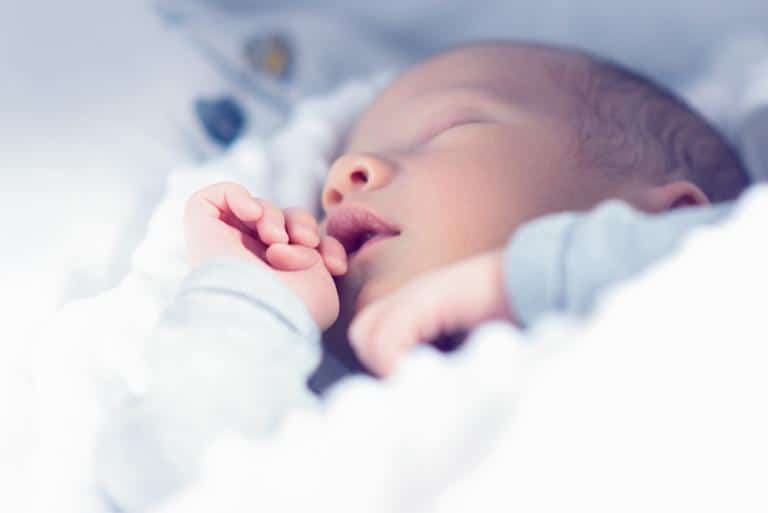
What are the Developmental Milestones for a Baby at 3 Months?
- The baby is able to hold his head in midline and the movements of his arms and legs are smoother and more continuous
- He can bring his hands from his side to midline and kick his legs alternatively, or sometimes, together
- Raises head and chest when lying on stomach
- Supports upper body with arms when lying on stomach
- At this stage, the baby’s visual alertness increases, especially to nearby human faces. He attentively follows movements around him as well as movement of his own hands at play
- The baby now enjoys bathing and other caring routines and begins to react to pleasurable and familiar situations with smiles, increased vocalising of “coos” and “gaas” and excited movements
- Establishes eye contact
- Takes increasing interest in his surroundings
- Beginning to vocalise. Smile in response to speech
- Turns head toward direction of sound
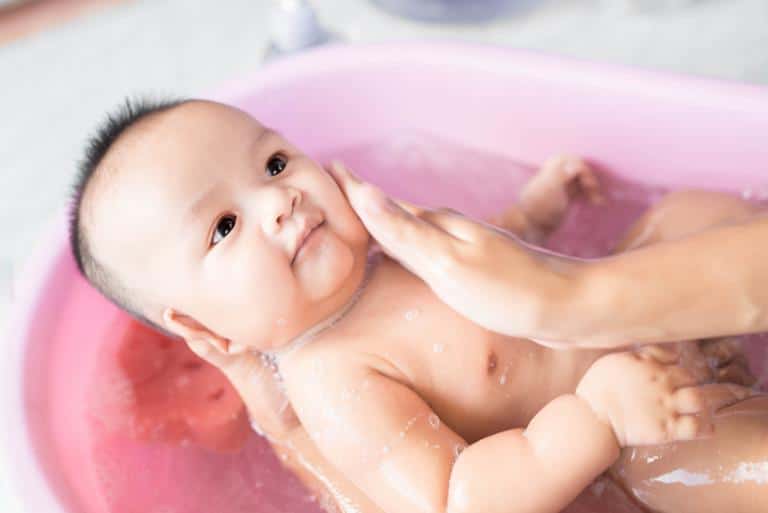
What are the Developmental Milestones for a Baby at 6 Months?
- The baby is able to raise his head to look at his feet and lift the legs up to grasp his foot
- When his hands are held, he pulls to sit himself with the head upright. He may be able to sit alone momentarily. When held in a sitting position, his head is upright, his back straight and he turns his head from side to side to look around
- When placed on the tummy, he supports himself on his straightened arms and palms
- When held standing, he no longer sags at the knee and will bounce up and down actively
- The baby’s eyes follow the movements and activities around him attentively. He can focus on small objects held within six to twelve inches of him and stretches out to grasp them with both hands
- He takes everything to his mouth at his stage
- He can grasp a rattle and shake it deliberately to make a sound
- Able to transfer objects from one hand to the other
- At this stage, the baby vocalises with a wider vocabulary (or) more syllables, laughs, chuckles, squeals aloud at play, and screams with annoyance. He can recognise familiar voices immediately
- Makes sounds resembling one-syllable words (example: da-da, ba-ba)
- Starts to imitate sounds
- Recognises parents
- Begins to fear strangers
- Beginning of teething
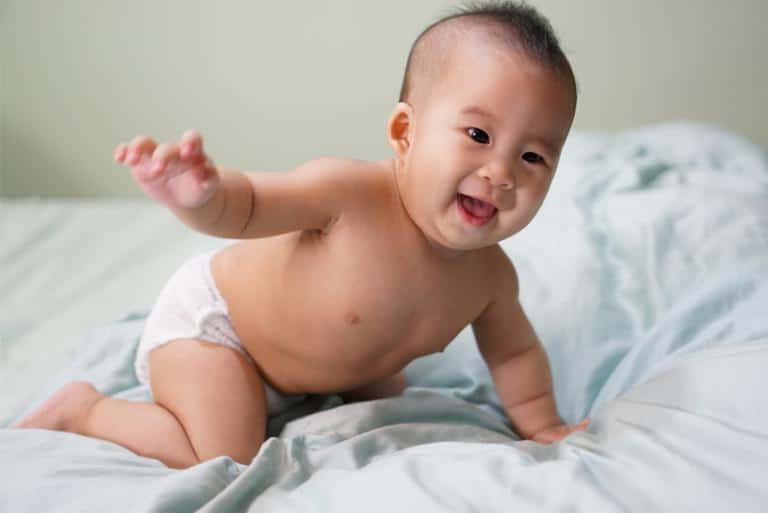
What are the Developmental Milestones for a Baby at 9 Months?
- The baby can sit alone for 10 – 15 minutes on the floor and lean forward to pick up toys without losing balance
- He progresses on the floor by rolling or squirming and attempts to crawl
- He is able to pull to stand for a few moments while holding onto support but falls backwards with a bump as he cannot lower himself properly
- When held standing, he steps purposefully alternating his feet
- The baby becomes visually very attentive to people and happenings in his environment
- He is also keenly attentive to sounds and voices, and he vocalises purposefully with friendliness or in annoyance. At this stage, he is beginning to understand simple terms like “no no” and “bye bye”
- He starts poking at objects with his index finger and picks things up between the fingers and thumb in a pincer grasp. He holds objects, bites a biscuit and tries to help with feeding
- He walks around furniture by stepping sideways, and walks forward and sideways with one or both hands held. Some babies may stand or even walk alone for a few seconds
- The baby can pick up fine objects like sweets, crumbs, or strings using a neat pincer grasp
- He drops and throws toys deliberately and watches them fall to the ground
- He can point with his index finger at objects that he wishes to handle or happenings which interest him
- At this stage, he knows and responds immediately to his own name and understands several words and instructions like “Give to daddy” or “Come to mummy”. He imitates adult vocalisations and is sometimes able to form words with gleeful enthusiasm
- The baby makes attempts to help with feeding and dressing. He drools and puts things into his mouth less often
- He attempts to copy more and more of your gestures and learns how to identify the use
- Plays interactive games, such as peek-a-boo and pat-a-cake

What are the Developmental Milestones for a Baby at 12 Months?
- Pull to stand. Walk with help or alone. Sit down without help
- Puts block in cup. Turn through the pages of a book by flipping many at a time
- Points to objects with index finger. Picks up small objects
- Responds to his or her name. Responds to “no”
- Understands several words and simple commands
- Can say mamma, papa, and at least one or two other words
- Drinks from a cup. Imitates others
- Waves goodbye
- May develop attachment to a toy or object
- Experiences separation anxiety and may cling to parents
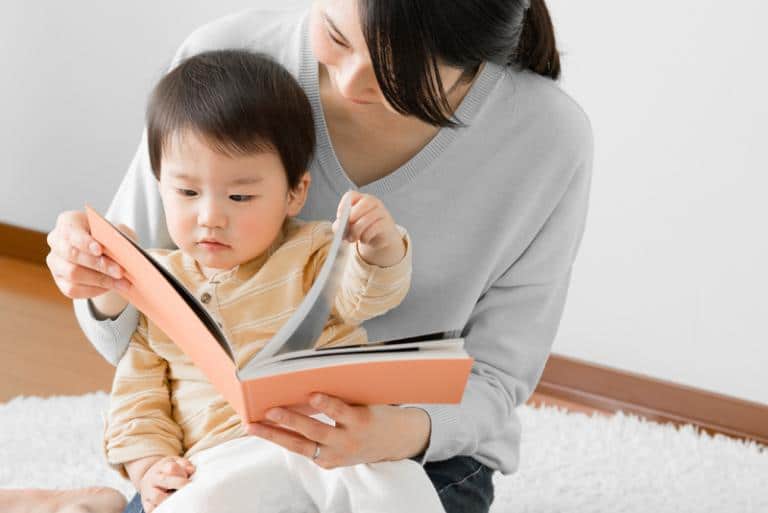
What are the Developmental Milestones for a Baby at 18 Months?
- Runs with a lack of coordination and falls frequently
- Walks up stairs while holding on with one hand
- Can build a tower of two to four blocks
- Can use a spoon and cup with help to feed himself
- Imitates scribbling. Can turn two or three pages of a book at a time
- Shows affection
- Listens to a story or looks at pictures
- Can say 10 or more words when asked
- Explores environment
- Identifies one or more parts of the body
- Understands and is able to point to and identify common objects
- Imitates domestic activities
- Is able to take off some clothing items, such as gloves, hats, and socks
- Begins to feel a sense of ownership, identifying people and objects by saying “my”
- Attains bowel control
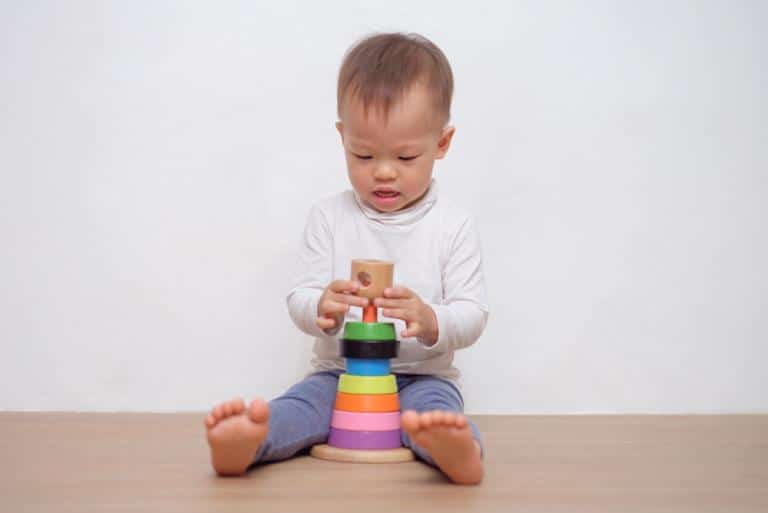
As your child continues to grow and progress, learn about his or her developmental milestones after 2 years old.

